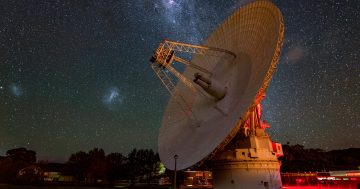An early rise this morning for a very long and bright pass of the International Space Station yielded this beginner a couple of interesting shots.
They were all taken from the side of Horse Park Drive Throsby, with obvious effects of lights from intersections and homes.
This is looking west, with the ISS passing the Orion constellation, with Rigel to the left and red giant Betelguese to the right, Jupiter at the bottom, and Aldebaran bottom centre.
Before the ISS pass, this was Jupiter in the centre, the Pleiades (Seven Sisters) centre left, Orion running off the top, and Capella centre bottom.
This is looking east towards the centre of the Milky Way (not very obvious given the light pollution and the dawning sky) as the ISS approaches the end of this visible pass.
The Southern Cross (without Pointers) is clear in the lower right, with Beta Crux looking very orange. There’s a lot of colour variation between the stars in this shot.
I’ve pushed the exposure of this one, so a little more of the Milky Way is obvious (as is the poor quality of my kit lens!) as the ISS disappears.
The light spill is from the intersection and traffic lights on the end of Well Station Drive.
Earlier this week, the Crescent Moon on 13 October.
A couple more over on my blog: the Moon in conjunction with Venus and a very ordinary shot of Neptune.
There are some more good passes for early risers over the next few days, including at 4:14 tomorrow and 4:59 Saturday. Details: http://twisst.nl/67222





















